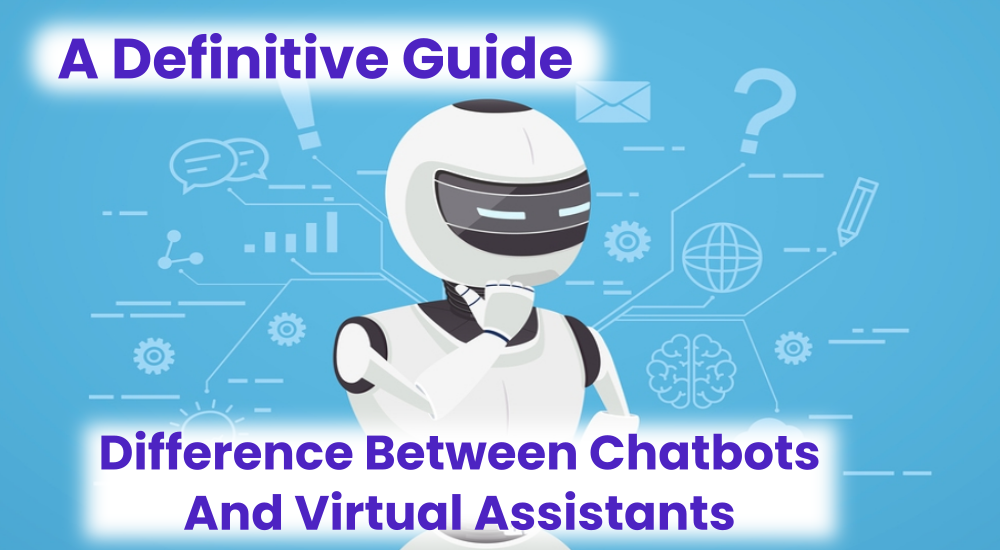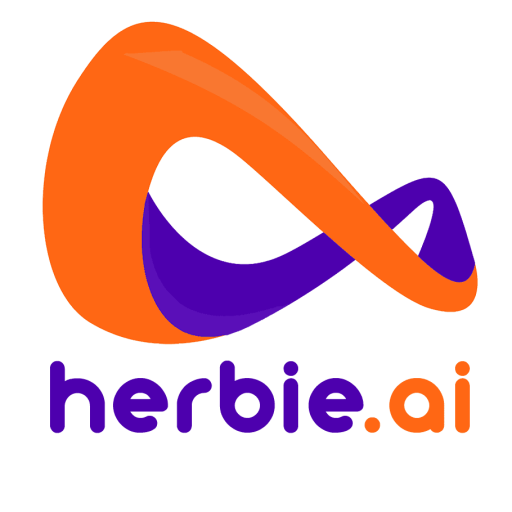
Table of Contents:
Introduction
- What are Chatbots?
- What are Virtual Assistants?
- Difference between Chatbots and Virtual Assistants
3.1 Natural Language processing
3.2 Keeping up consistency
3.3 Manage Conversation
3.4 Understanding Capabilities
3.5 Contextual Processing
3.6 Continuous operation
3.7 Companion Connections
- Myth busters
Myth 1: A chatbot isn’t intelligent enough
Myth 2: A virtual assistant can perform a wider range of functions
Myth 3: A virtual assistant is best at remembering context
Conclusion
Introduction
If chatbots and virtual assistants mean identical thing to you then your understanding of those AI applications requires an upgrade. In point of fact, there is a significant difference between the 2 that employees ought to know well before a company introduces chatbots or virtual assistants.
AI applications have evolved at an unbelievable pace and are providing enormous value. Tech-savvy companies are building AI applications to assist organizations boost revenue, augment business productivity and innovate business operations. Many organizations are therefore extending efforts to spot more and more areas to leverage and derive maximum value from AI.
Chatbots and virtual assistants are ripened fruits of AI, which organizations are actively and significantly utilizing for automating their internal business processes. We can’t deny the actual fact that these AI applications don’t seem to be only helping organizations but also are impacting our personal lives too. However, these two ‘intelligent’ applications of AI are often confused together .
Chatbots are generally used as information acquisition interfaces, like extracting product details. Virtual assistants can assist in conducting business, like reminding you of meetings, managing your to-do lists, taking down notes and then on. If you ask a chatbot for such virtual assistance, they get confused, and ultimately keep asking similar questions for clarification. Both are considered conversational interfaces, yet both are very different from each other.
Hence, it is vital that organizations understand the differences between chatbots and virtual assistants to use them wisely.
What are Chatbots?
Chatbots are automated programs are used as a substitute to Support executives. It helps in making conversations automatically with humans. The conversations may be either though text or voice. This AI-powered software is mostly utilized by organizations to counterpoint customer service programs. Chatbots hold an important role in customer service, wherein they’re used as an information acquisition tool. Customers interact with chatbots to clarify their queries regarding a product, gain product-related information, or perhaps book a meeting with the merchandise manager.
What are Virtual Assistants?
A virtual assistant could be a digital personal software-based agent that assists us in performing our daily activities like setting clock alarms, scheduling a meeting, making calls, typing messages, and so on. Virtual assistants are the same as personal human assistants that, let’s say, take down notes during a gathering, remind us to tend to our ‘to-do-lists,’ or read messages and emails sent to us.
Difference between Chatbots and Virtual Assistants:
Natural Language processing
Chatbots don’t seem to be programmed to reply to a change in use of language. It doesn’t have high language processing skills. It only picks certain words from the user and answers it with a response programmed into it. Meanwhile, chatbots have a structured dialogue, and is specifically programmed to answer specific replies to specific questions and it cannot reply to complex questions that aren’t programmed in it. In such a situation, it cannot understand the customer and fails to reply appropriately.
Natural Language processing (NLP) and Natural Language Understanding (NLU) are main focus of Virtual Assistants. There has been a considerable amount of research in NLP to make advanced capabilities in virtual assistants; case in point Virtual Assistants can now understand slangs utilized in everyday natural conversations and analyse the emotions by the employment of languages, to boost an excellent better set of communication skills. Virtual assistants that are equipped with NLP are more conversational than chatbots.
Keeping up consistency
One thing that’s progressively significant for brands isn’t exclusively to be available on different channels, yet additionally to maintaining consistency over those channels. So when a client begins a discussion all over again in the call, they will lift it again through talk, or email, or content.
Chatbots don’t sustain this specific situation, so clients ought to begin all over again once they go along with a brand on another channel. This could be exceptionally harming to a brand’s notoriety since it doesn’t provides a consistent encounter to the client.
Manage Conversation
While collaborating with chatbots, on the off chance that you just break the discussion within the middle of, at that time, the bot will neglect to remember the setting of the connection.
Nevertheless, Virtual Assistants use dynamic discussion stream methods to understand the social purpose, enhancing interchanges with people.
Both chatbots and Virtual Assistants hold broad abilities to assist change business. The first centre is to acknowledge the right zones of utilization in your business to use both of those AI applications.
Understanding Capabilities
Chatbots give exact responses to questions; however, they miss the mark regarding understanding our states of mind and feelings and don’t have a clue the way to answer likewise.
However, with the employment of innovative language processing, Virtual Assistants can dissect the complexities of language. The remote helpers connect with clients effortlessly more human-like, offering seemingly higher proficiency and precision.
In any case, with the help of AI enthusiastic insight, chatbots which will measure human feelings are currently being created.
Contextual Processing
Chatbots regularly come up short on a faster exchange of the executive’s motor and slightly depends on the intensely of systematic discourse. This suggests the discussion stream is constrained by the bot, and also the flow breaks when the bot can’t comprehend the client’s goal.
Chatbots regularly neglect to stay upsetting through the span of a discussion and can’t comprehend client plan by and huge.
Virtual Assistants, but, utilize dynamic discourse. During this type of conversation, the stream can switch between being constrained by the client or the innovation.
Continuous operation
Customer administration is about accommodation, which includes every minute of everyday client assistance. An economical, yet fantastic approach to provide essential assistance is through the never-dozing chatbot. Devine shared an excellent case of this.
Clients get the same degree of administration they might get from the assistance rep. The chatbot can perceive human feelings, as an example, outrage, perplexity, dread, and euphoria.
What’s more, as referenced above, if the chatbot distinguishes that the client is angry, disturbed, or baffled, it’ll consistently move the connection to an individual to dominate and wind up the client.
Companion Connections
Most organizations wish their specialists had more opportunities to create outbound, proactive contact with their clients. Chatbots are there to assist, and here and there, they’re upsetting how brands confine touch with their clients. despite whether it’s a necessary email or content on a client’s birthday, or a quick registration to inquire on whether or not they appreciate the brand’s item or administration, chatbots are encouraging brand dependability.
Myth busters
Myth 1: A chatbot isn’t intelligent enough
Some of the foremost powerful chatbots are equipped with robust language processing so as to grasp the meaning of an inquiry instead of simply the keywords.
However, bots powered with NLP are now much more flexible. Unfortunately, many chatbots don’t leverage true NLP and are giving chatbots a foul name.
Thanks to machine learning, chatbots will still improve and can produce higher self-service rates than ever before.
Myth 2: A virtual assistant can perform a wider range of functions
While there could be some truth to the present now, the gap between what the 2 hope to attain is continually narrowing.
In the past, the chatbot could only perform specific tasks like a password change or information about the weather. Whereas, the virtual assistant have been proved to perform more advanced functions.
Thanks to advancements in NLP and machine learning, however, this can be changing. Chatbots are now way more diverse and might perform more functions through their ability to grasp natural linguistic communication. The employment of decision trees, for instance, makes it far easier to get the precise intent behind user inquiries, broadening its functionality even further.
Myth 3: A virtual assistant is best at remembering context
Virtual assistants even now still struggle to recollect key information during conversations but chatbots are already proving they will store what you tell them.
For example, Herbie Virtual Assistant is in a position to recollect your email address if you provide it to her.
If you tell “My email address is….” then she is going to retain that information for future use. Therefore, if you were to invite a demo, you wouldn’t require you to resubmit it.
Rather than debate what we must name them, it’s important to acknowledge how the chatbot (or virtual assistant) will provide the foremost human-like experience possible by understanding our language to the most effective capabilities.
Herbie Virtual Assistant could be a leader in language processing and AI for customer support, e-commerce and conversational chatbots, providing an easy-to-deploy solution that improves customer satisfaction, reduces support costs, and increases revenue.
Conclusion
There are a developing number of advancements accessible that may robotize the client experience. Be that because it may, within the age of the client, it’s essential to confirm that these innovations improve the experience also. That’s the explanation it’s imperative to recollect particular contemplations – for example, structure. Your image is one amongst a form, and also the structure of your IVA need to mirror your model and persona
Interested in checking out more? Our team of experts is out there to point out you ways Herbie Virtual Assistant can benefit your company.
